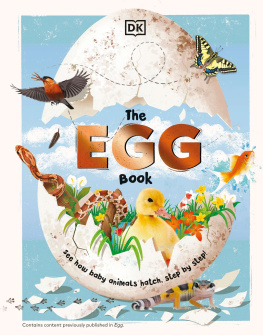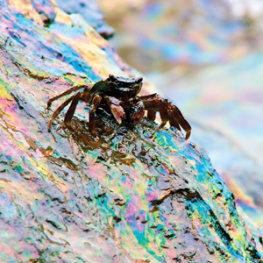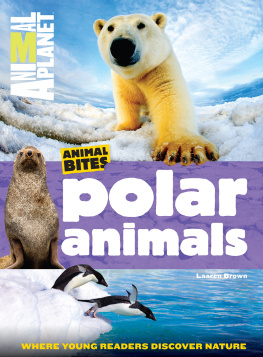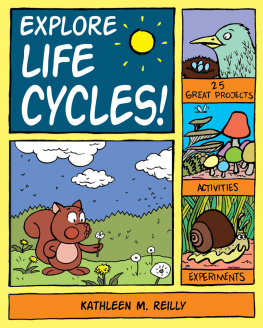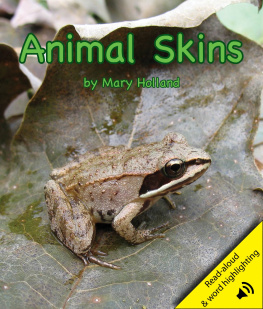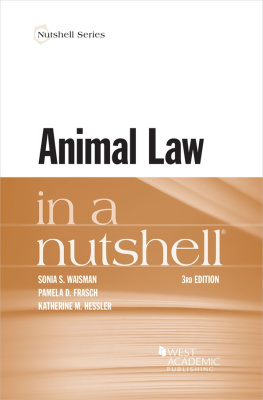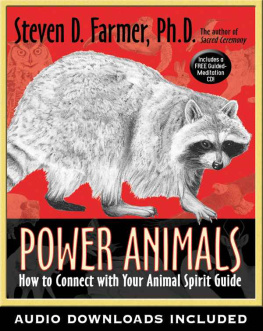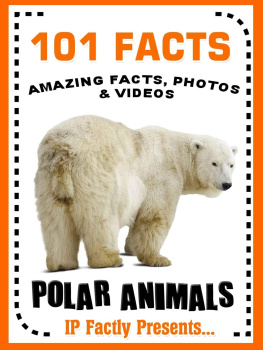S CIENCE SECRET S
SECRETS OF
ANIMAL
LIFE CYCLES

ANDREW SOLWAY

E-book published in 2012 by Encyclopdia Britannica, Inc., in association with Arcturus Publishing Limited, 26/27 Bickels Yard, 151-153 Bermondsey Street, London SE1 3HA. Britannica, Encyclopdia Britannica, and the Thistle logo are registered trademarks of Encyclopdia Britannica, Inc.
ISBN 978-1-61535-629-4 (e-book)
This edition first published in 2011 in the United States of America
by MARSHALL CAVENDISH BENCHMARK
An imprint of Marshall Cavendish Corporation
Copyright 2010 Arcturus Publishing Limited
This publication represents the opinions and views of the author based on Andrew Solways personal experience, knowledge, and research. The information in this book serves as a general guide only. The author and publisher have used their best efforts in preparing this book and disclaim liability rising directly and indirectly from the use and application of this book.
All rights reserved. No part of this publication may be reproduced, stored in a retrieval system, or transmitted in any form or by any means, electronic, mechanical, photocopying, recording or otherwise, without the prior written permission of the copyright owner.
Planned and produced by Discovery Books Ltd., 2 College Street, Ludlow, Shropshire, SY8 1AN www.discoverybooks.net
Managing editor: Paul Humphrey
Editor: Clare Hibbert
Designer: sprout.uk.com Limited
Illustrator: Stefan Chabluk
Picture researcher: Tom Humphrey
Photo acknowledgments: Alamy: p 11 (Bob Gibbons); Corbis: pp 15 (W. Wayne Lockwood, M.D.), 23 (MedicalRF.com), 25 (DLILLC), 27 (Jean Francois Istel/Sygma); FLPA: pp 20 (Suzi Eszterhas/Minden Pictures), 22 (Nigel Cattlin); Getty Images: pp 10 (Paul Zahl/National Geographic), 12 (Bianca Lavies/National Geographic), 13 (Nicole Duplaix), 19 (Image Source), 28 (Adrian Bailey); IStockphoto: p 5 (Eduardo Jose Bernardino); NHPA: pp 8 (Rich Kirchner), 26 (Stephen Dalton); Shutterstock Images: cover eggs (Vishnevskiy Vasily), cover bee (Seleznev Valery), cover and pp 1 chicks (Cheryl E. Davis), 14 (Nickolay Stanev), 16 (Dr Morley Read); Wikimedia: pp 7 (Yotcmdr), 24 (Mehmet Karatay).
No part of this publication may be reproduced, stored in a retrieval system or transmitted, in any form or by any means, electronic, mechanical, photocopying, recording, or otherwise, without the prior permission of the copyright owner. Request for permission should be addressed to the Publisher, Marshall Cavendish Corporation, 99 White Plains Road, Tarrytown, NY 10591.
Tel: (914) 332-8888, fax: (914) 332-1888.
Website: www.marshallcavendish.us
Other Marshall Cavendish Offices:
Marshall Cavendish International (Asia) Private Limited, 1 New Industrial Road, Singapore 536196 Marshall Cavendish International (Thailand) Co Ltd. 253 Asoke, 12th Flr, Sukhumvit 21 Road, Klongtoey Nua, Wattana, Bangkok 10110, Thailand Marshall Cavendish (Malaysia) Sdn Bhd, Times Subang, Lot 46, Subang Hi-Tech Industrial Park, Batu Tiga, 40000 Shah Alam, Selangor Darul Ehsan, Malaysia
Marshall Cavendish is a trademark of Times Publishing Limited
The website addresses (URLs) included in this book were valid at the time of going to press. However, because of the nature of the Internet, it is possible that some addresses may have changed, or the sites may have changed or closed down since publication. While the author, packager, and the publisher regret any inconvenience this may cause to the readers, no responsibility for any such changes can be accepted by the author, packager, or publisher.
Every attempt has been made to clear copyright. Should there be any inadvertent omission, please apply to the copyright holder for rectification.
Library of Congress Cataloging-in-Publication Data
Solway, Andrew.
Secrets of animal life cycles / Andrew Solway.
p. cm. -- (Science secrets)
Includes index.
1. Animal life cycles--Juvenile literature. I. Title.
QL49.S669 2011
591.56--dc22
2009050538
1 3 6 5 4 2
Whats In a Life Cycle?
Do your parents have pictures of you when you were a baby? If they do, how do you look? You probably look very different from the way you look now! You have changed a lot since you were born, and you will change in other ways as you grow and get older.
Life Changes
All animals change over time. They are born from their mother or hatch from an egg, they grow and become adults, then they get old and die. This is a life cycle.
When animals become adults, they are able to reproduce (produce young).
When the offspring (young) are born, they begin a new life cycle.

The human life cycle. Children are born and grow into adults, who reproduce and have more children.
Learning About Life Cycles
In this book, you will find out more about animal life cycles. As you read, you will learn secrets about how different animals are born, grow, reproduce, and die.
Why do some animals change completely as they grow up? Why are eggs so amazing? And what happens to animals when they die?

This little girl, her mother, and her grandmother are all at different stages of the human life cycle.
E XPERIMEN T

FAMILY CHANGES
Look for photos of yourself when you were a baby. How different do you look? Would you recognize yourself if no one had told you who was in the photo?
See if you can find pictures of your parents and other family members when they were young. Can you recognize them? Why or why not?
How Long Does a Life Cycle Last?
Some insects live only for a week. Mice live for just a few years. Humans, whales, and tortoises, however, can live for more than one hundred years.
Live Fast, Die Young
Animals that have short lives must cram everything into a short amount of time. Mice are adults at around six weeks old, and they produce their first young only three weeks later.
Other animals have even shorter lives. The pygmy goby, a small fish, lives an average of only fifty-nine days. Mayflies and some kinds of midge spend less than a day as adults.


Giant tortoises, such as this one from the Seychelles Islands, can live for more than 100 years. Some are said to approach 200 years in age.
Slow and Steady
Humans are among the longest-lived animals. However, we are not the record breakers. Giant tortoises can live for more than 170 years. They do not become adults until they are 20 or 25. Bowhead whales have been found with
Next page

